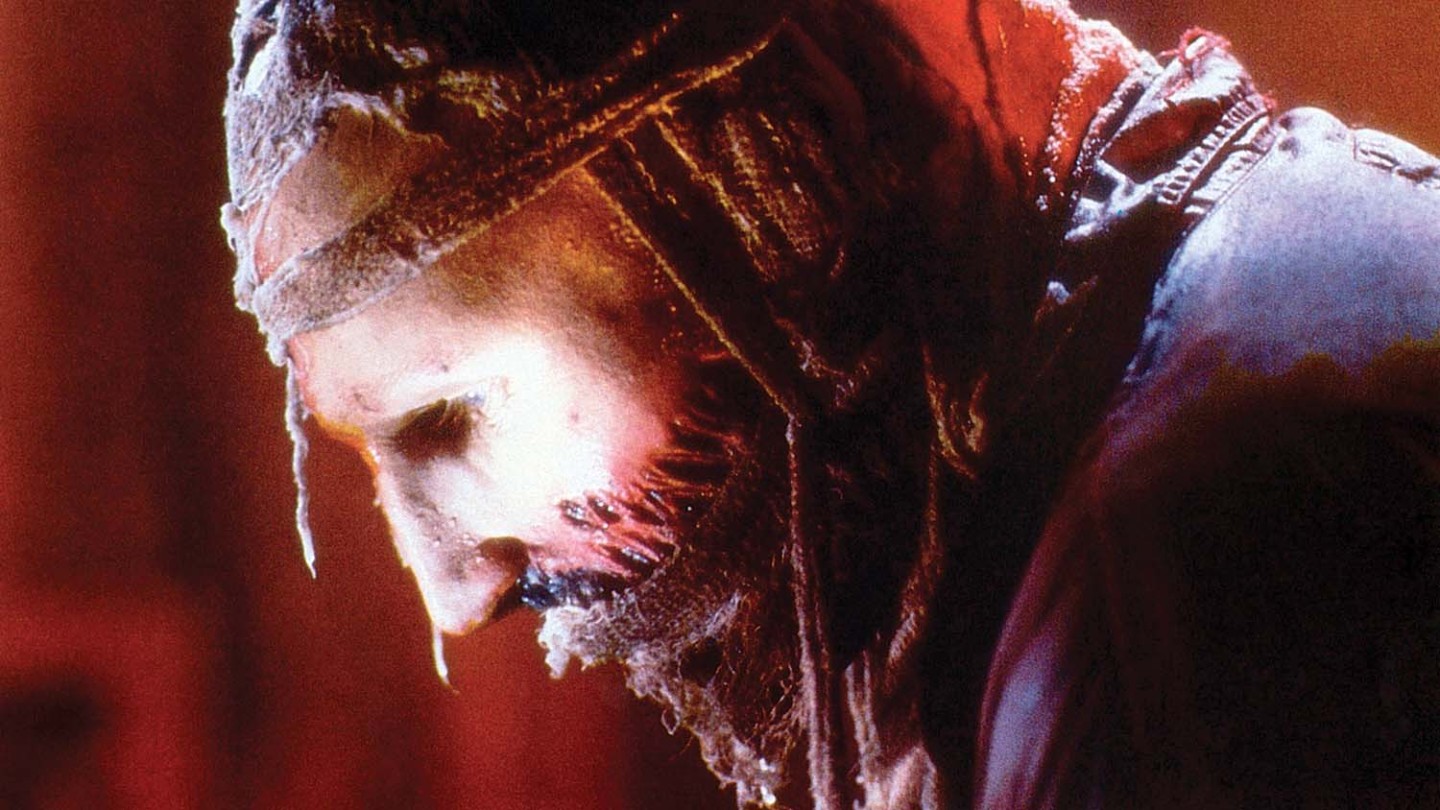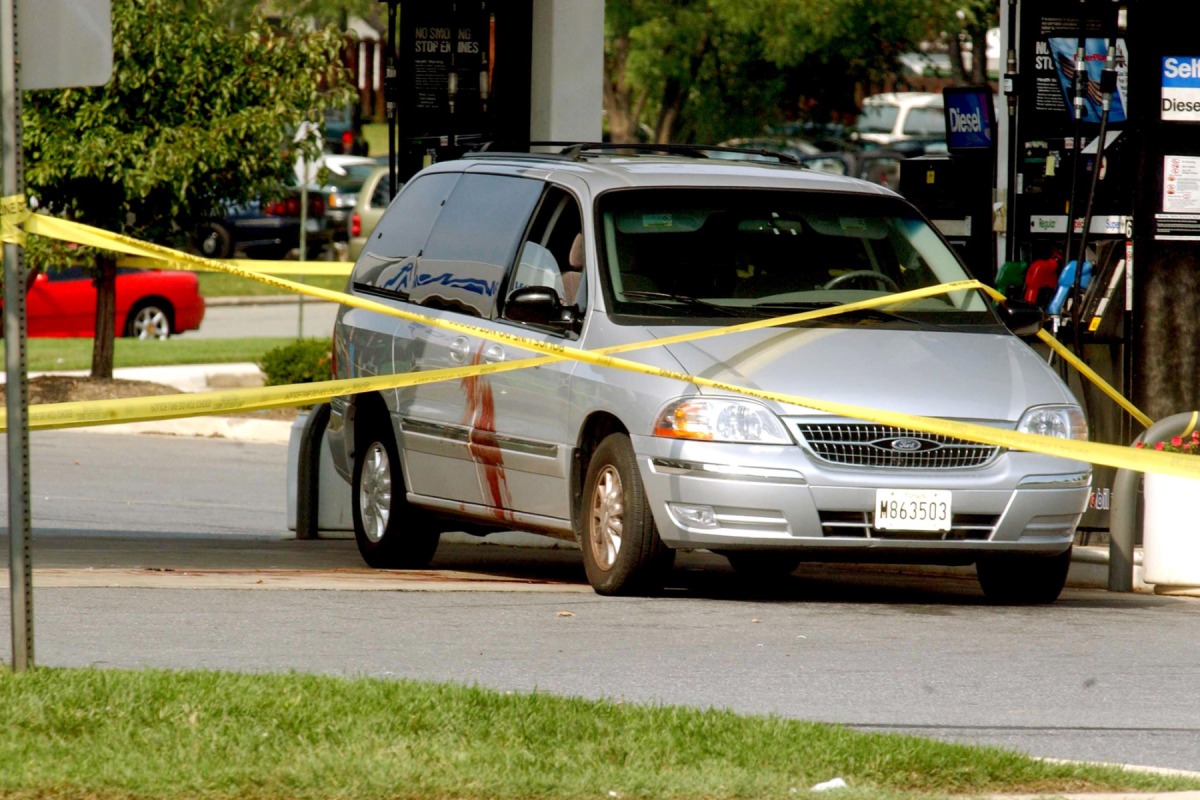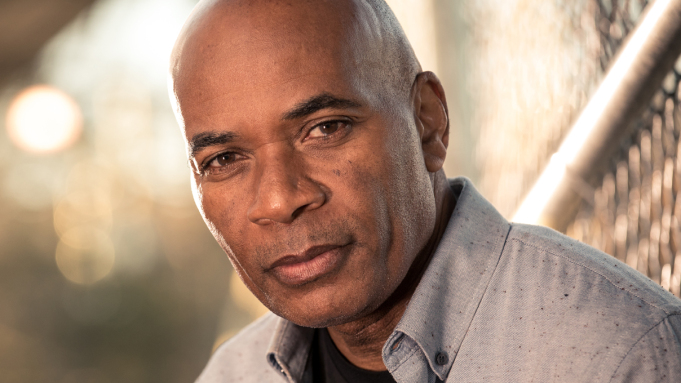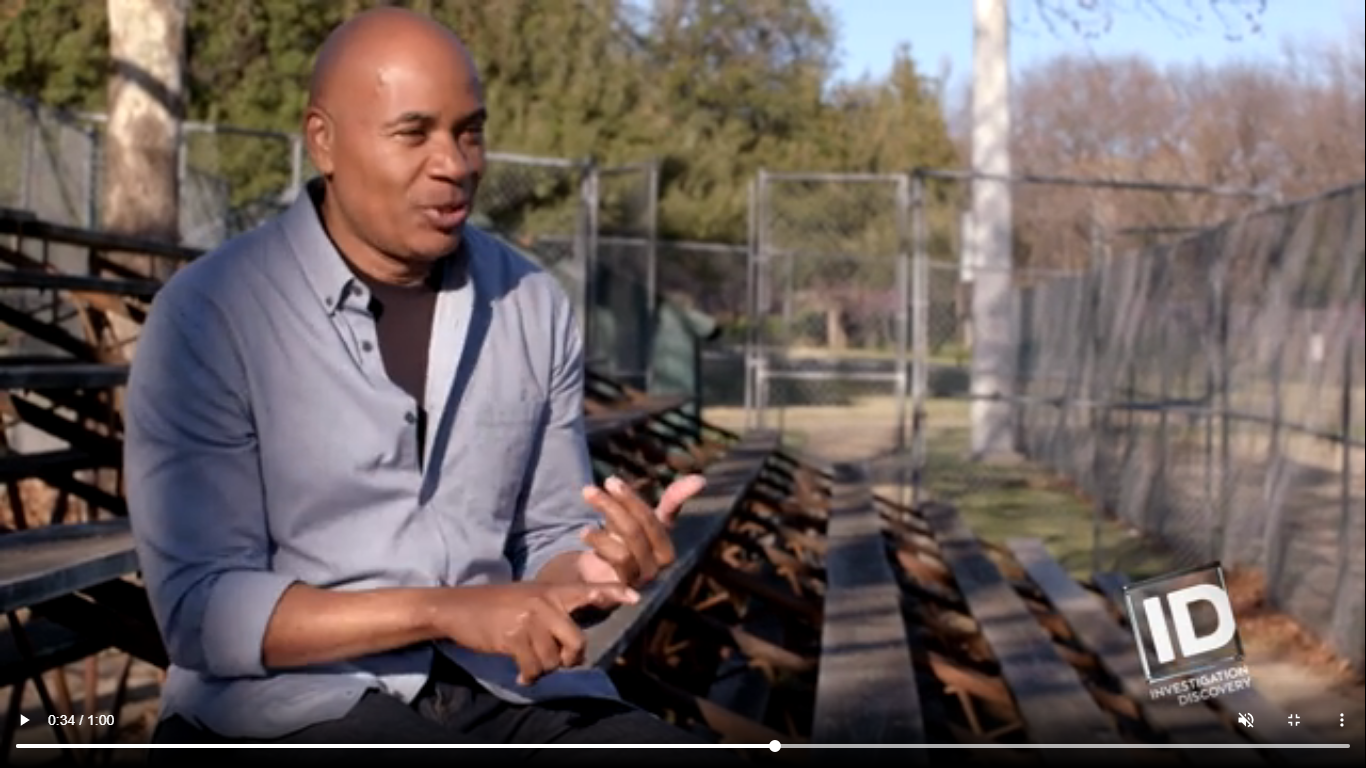Cast and crew recall how the dark genre-transforming cult classic had filmmakers doing a sneaky end-run around the studio’s edit before the film won over critics and opened at No. 1.
Decades before superhero films became billion-dollar studio tentpoles, audiences were introduced to a mysterious, tragic character known simply as Darkman. Well before its time, the R-rated Universal film came out of nowhere to open at No. 1 at the box office on Aug. 24, 1990 (worldwide gross of $48.8 million off a $16 million budget), and earn critical love. Its success would spawn comic books, action figures, video games and an unaired TV pilot in addition to a couple of hokey, direct-to-video sequels absent most of the original cast.
Starring a pair of then largely unknowns, Liam Neeson and Frances McDormand — and the late Larry Drake, playing a ruthless mob boss, a significant change from his intellectually disabled L.A. Law character — director Sam Raimi’s first studio picture set his trajectory toward his blockbuster Spider-Man trilogy of the 2000s. In 1990, the 30-year-old filmmaker was still known for making the blood-soaked, campy B horror films Evil Dead (1981) and Evil Dead 2 (1987), which starred one of his oldest friends, Bruce Campbell.
Thanks to the enormous success Warner Bros. had with Tim Burton’s Batman the previous summer, Universal rolled the dice on Darkman, the story of mild-mannered scientist Peyton Westlake (Neeson), who becomes horribly disfigured when gangsters destroy his lab. With enhanced strength (and bouts of explosive rage) as a byproduct of the trauma, Darkman uses synthetic skin to disguise himself in an effort to reclaim his love, Julie Hastings (McDormand), while seeking revenge for his shattered existence.
Now, 30 years later, with the help of cast and crew, save for Raimi, who declined to participate — “It was such a conflicted time for Sam; I don’t think he wants to revisit it,” says producer Robert Tapert — The Hollywood Reporter sets out to answer the question posed in the summer of 1990: “Who is Darkman? ”
ROBERT TAPERT producer This movie was a labor of love for Sam Raimi. He tried very hard to make a movie about [pulp novel and radio character] The Shadow, but that proved impossible because at that time, it was going to be made by Bob Zemeckis. So Sam said, “I am going to create my own superhero and take aspects of other superheroes and incorporate them into the character of Darkman.”
SEAN DANIEL former Universal production president We said, “We love the script and Sam is a great filmmaker, so let’s make this as powerful as the movie can be.”
NANCY NAYOR casting director Many [including the late Bill Paxton] were on the list for the lead, but Liam was so perfect, such a powerful presence with such emotional range and haunted eyes.
LIAM NEESON Peyton Westlake/ Darkman The script appealed to the little boy in me because I know it would have been something I would have loved to have seen on a Saturday matinee growing up in Ireland, and it was a big fat juicy lead in a movie.
FRANCES MCDORMAND Julie Hastings At the time, I had been sharing a house in Los Angeles with Sam, and [husband] Joel and Ethan Coen. When the project came up, Sam was very influential in getting me an audition.
NAYOR For the female lead, we had narrowed down the choice between Fran McDormand and Kelly Lynch from Drugstore Cowboy.
TAPERT Julia Roberts came in. The studio was pushing for Julia for a number of reasons.
NAYOR She and Liam had dated briefly and were broken up. When they read the audition scene together, both actors had tears in their eyes. It was so intimate. Right after, her agent called and said she felt it might be better if she was taken out of consideration. I think she felt it would just be too awkward for them to work together again so soon under the circumstances.
MCDORMAND I think Liam had a lot to do with helping me get cast. We had a very good time together in the audition. I remember for the intimate scene being attached to the idea of making love with my socks on. I felt that was a really important element of the comfortable relationship. Sam said, “I am not sure about the socks,” and I said, “I’m wearing the socks. I am wearing the socks.”

BRUCE CAMPBELL final disguised Darkman, (uncredited) sound mixer We had made Evil Dead 2 just before that, and I was not enough of a [acting] commodity for Universal. But Liam Neeson at the time, he did a couple of well-known things in Europe, but I don’t think people could have picked him out of a police lineup here. Sam threw me the bone and said, “Why don’t you be the final [in disguise] Darkman.” So, I am Darkman, technically (laughs).
STEVE SIEBERT Larry Drake’s long-time manager Larry cherished this experience. He would be incredibly proud that 30 years later Darkman lives on.
NAYOR I was a huge L.A. Law fan at the time and had been so moved for years by Larry Drake’s portrayal of Benny. So the idea of Larry going from playing such a sympathetic, vulnerable character to playing a ruthless bad guy was exciting.
TAPERT There are 5,000 names on that script. It was constantly being rewritten. In hindsight, I am not sure it ever got better; it just incorporated more people’s pisses. The Coen brothers were not credited by the guild, but they were instrumental early on with building the structure. The idea sprung from Sam’s head, and Joel and Ethan coaxed him along that road. Chuck Pfarrer was the best at the villains.
NEESON The shooting of the film was exhausting, not least because of the long hours in the makeup chair, which started off at five hours, but we got that process time down to just over three hours. At the same time, I was also preparing to play a bare-knuckle boxer in a film [The Big Man] to be shot in Scotland immediately after completion of Darkman, so I was setting my alarm clock for about 3 a.m. in order to do a workout as preparation, so days were definitely long and for the most part tiring. But the exhaustion factor was in a weird way quite pleasing. I certainly led a very monastic existence for several months.

MCDORMAND When Sam got Darkman, he had been criticized for his female characters in the Evil Dead movies, and probably rightfully so. And I think one of the things he was trying to say with the character of Julie was to show he could write a strong female character. But, in retrospect, I felt like I probably should not have tried to play Julie as a strong female character because at the end of the day, she still was the damsel in distress, waiting for the hero to come save her. I could have done a better job if I’d surrendered to that.
TAPERT Fran had her take, and it was a tricky part for her. Sam, at the time, did not have all the skills that he now has of working with actors and speaking a different language — a director’s language — to actors. It was just a learning curve for everybody.
MCDORMAND I think saying “creative differences” makes it more grandiose for you rather than for us. I struggled against working in a way that I had never been trained to do. I was trained to be a theater actress. I was struggling with technically how to make movies. So it was an adjustment for me to figure out my purpose inside Sam’s technical world of making a movie. There were times when he thought we could be steamrolled and then pop right back up, like a cartoon character. I chafed against that a lot, but I learned a lot, too.
BILL POPE cinematographer Sam needed a DP because Universal insisted that he not make it look like Evil Dead — standard studio-think at the time: Never give a new director exactly what they are comfortable with as a way of controlling them. Sam asked Barry Sonnenfeld, who recommended me. Even though I had never shot a feature before, and refused the job at first, Sam hired me anyway.
RANDY SER production designer As the film was a Universal picture, the designs were inspired by and meant to be a subtle homage to the studio’s 1930s horror films. Darkman first arriving at his lair warehouse was one where the design was especially influenced by Universal horror films of the 1930s. The design suggested the play of light and shadow between life and death of Dr. Frankenstein’s laboratory.
POPE We used the eyeball/flyball rig, the Perfalock dance-o-cam, the Perfalock drunken cam, snap zooms, whip pans, Dutch angles, cameras attached to sticks and blankets and virtually anything that moved. We always moved the camera. I have a distinct memory of being told by our dolly grip on day 50-something that we were doing our first shot in the film where the camera didn’t move through space — and it was a 360-degree pan.

DANNY ELFMAN composer Because of Evil Dead, Sam went on my shortlist of, “If they call, just say yes.” So his office called about Darkman and said, “He would like to meet you, but he’s shooting. Can you go down to the set?” It’s a night set at Universal with water cranes for rain. He introduces himself really quickly, says he loves my work and then says, “Let’s put this guy to work!” They put me in a raincoat, give me a bucket and tell me that when Liam comes stumbling out, you throw the water in his face for when a car passes by and splashes him. I cursed him later because I got a cold.
MCDORMAND That is one of Sam’s specialties. He didn’t need special effects, and he didn’t need to use big budgets to get across the idea of an absurd comic book world.
ELFMAN That idea was to create something sad and romantic. That was the fun of Darkman for me, the sad romanticism.
SER We had no computer-aided pre-vis or drafting programs to help determine if a shot might work within the confines of a set. The lack of technology did not daunt our amazingly talented art department, which includes art director Phil Dagort and set decorator Julie Fanton.

POPE We built a three-story steel girder set in an airplane hangar. In days of very little safety supervision, we all walked the steel like real steelworkers, acting and shooting high in the air. No safety harnesses. At some point, Colin Friels [who played evil mastermind Louis Strack Jr.] fell off in the middle of a fight scene and broke his femur. He went to the hospital, got it set, got some painkillers and returned that afternoon to finish the scene.
CAMPBELL My first wife divorced me, so I was broke and going, “What the hell? ” So Sam goes, “Come on. We are doing post on Darkman, and I have all sorts of problems.” We both loved sound. It needed lots of looping, lots of sound effects. So I made studio guy money and wound up voicing every criminal who fell to their death. Holy shit, I screamed my brains out. And they’re good, vintage screams. We got to a point where we were mixing and Sam goes, “Shit, I need Darkman to yell ‘Julie!’” And he looks at me and says, “Get in the booth.” So that’s in there. And I did all the television looping for Liam.
TAPERT When Universal brought in their own editor [Bud S. Smith], they really did not want Sam in the process. Before that, we started on the preview process, scoring maybe 65 [from the audience] and we were down to maybe a 26. They felt that he had his opportunity with the original editor [David Stiven], who was so befuddled that he wanted to cut it into a romance movie. He had a breakdown and one day said, “I can’t do this,” and left.
BUD S. SMITH editor I said I would only do it if you leave me alone, just go away and give me some time to look at it. Sam and Rob went to Florida for three weeks, and I tore into the film and did what I thought would be the right thing to make it viewable.

TAPERT Universal sent us away. We came back, and the editor had cut it down from two hours to 85 minutes. We tested that, and it did not test as well as the longer version, which was Sam’s cut. I think we went through four or five more test screenings, and each time the score got lower and lower, and we got more depressed.
ELFMAN When I saw Sam taking this beating, I really got pissed. There was even a point when I threatened to take my name off the film and return my fee, telling Sam, “Whatever I can do to support you on this.”
DANIEL I remember some really low scores that had everyone totally freaked out.
TAPERT It was the preview process that was the undoing. And truthfully, it was never going to preview that great because that audience was not used to something like that.
CAMPBELL My favorite scene was cut because of a preview. Colin’s character starts to woo Julie, and you go, “Maybe this guy is all right.” Cut to his apartment and he’s wearing a towel, and he opens up a box and throws gold coins on the bed. Then drops his towel dives onto the coins buck-ass naked. They do previews, and that scene kept popping up. An exec looks at me and goes, “I’ll give you a copy of that scene because it’s never going to be in the movie.” And I was like, “You pussy.”
DANIEL I think that was a good cut.
ELFMAN Universal’s attitude at that point was cut all the weird shit, and I would tell Sam, “This crazy stuff is what makes the film.” Rob and Sam did their best to piece it back together.
TAPERT I don’t mind saying this now, and Sam will probably be unhappy, but the studio said, “There is nothing we can do to save this picture. Let’s lock it [Smith cut approved].” So we locked the picture on Friday night at 5 p.m. We were incredibly disheartened and dispirited. And Sam’s present editor, a guy by the name of Bob Murawski, said, “There is a much better movie than what we are locking right now.” So, the decision was made that we would re-edit the movie. We spent 48 hours basically recutting the entire movie, restoring things we thought were important. We added nine minutes back in, things we really liked that the preview audiences would recoil from, but that was what it was meant to do. We locked it — and didn’t tell anybody.
SMITH I was gone by then. I did what I did. I was just trying to make it flow so it didn’t stop and start.
TAPERT Universal came to watch it after the mix, and there was this giant outcry, but there was nothing to be done. The negative had been cut. Critic screenings were 48 hours later. Bob and I advocated very strongly for the deception. Sam, left to his own, probably would not have done that. He is not that kind of guy. But I am.
DANIEL [Universal Pictures chairman] Tom Pollock was seriously fucking furious. I remember thinking, “That is one ballsy guerrilla move.” Is it as big a breach of every conceivable protocol of delivering a movie in postproduction? Yes. Totally. It was an Ocean’s Eleven maneuver.
DAVID SAMETH former Universal head of creative advertising Sam introduced me to Liam Neeson, and I told him how excited I was to be working at Universal on a horror movie. And he just looked at me and said, “This is not a horror movie.”

TAPERT The marketing team liked the movie because they had a handle on it. “Who is Darkman? ” That was a stroke of genius.
SAMETH The question was simple, memorable, had the title of the movie in it and super cheap to print on posters and stick those all over fences in major cities.
DANIEL It would not have opened at No. 1 without “Who is Darkman? ”
TAPERT There was an element of vindication for us being dismissed in postproduction when the movie opened No. 1.
ELFMAN It feels really good when it comes out that way. It’s like, “Yeah, motherfuckers were wrong again, and fuck them and their fucking preview numbers.”
MCDORMAND What is gratifying is that it continues to intrigue an audience. Even with all the Marvel and DC Universe that we have now. Darkman is an art film.
NEESON I have not seen the film for many years now, but it is still very dear to me.






